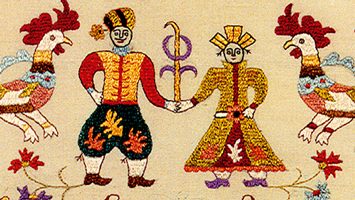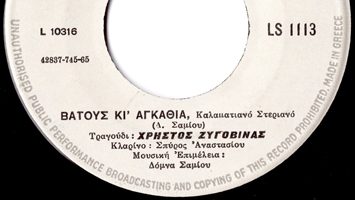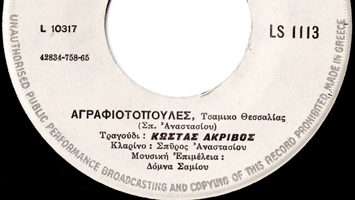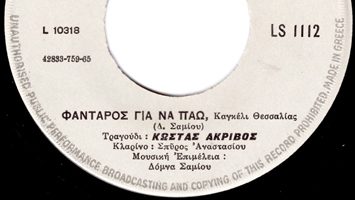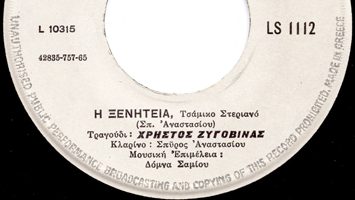“Musical Travelogue with Domna Samiou” (“Musiko Odiporiko me ti Domna Samiou”) was a television series researched and presented by Domna Samiou and broadcast by Greek National Television in 1976-1977. Each episode was dedicated to the music and dance tradition of a different area of Greece.

Stavros Hadjistamoulis, known as Stavrakas, Υannis Ganotis, Giorgis Tsiroyannis and Thanassis Mavrikos, discuss the custom with Domna Samiou in the central square of Makrinitsa. They all sing The Song of May.
May Day, the flowers celebrate
and the birds call their mates
The Song of May
Yannis Ganotis, Yiorgis Tsirogiannis, Thanassis Mavrikos, Stavros Hadjistamoulis. Makrinitsa 1976
TV program “Musical Travelogue with Domna Samiou”

The performers of the May feast, the “boulouki”, as it is called in Makrinitsa, are headed by the personification of “May”, a young man with flowers on his head, holding a stick decorated with green branches and flowers in his hand.
The other performers are: the Janissary, the Girl, the Gypsy and his wife, the Doctor dressed in Frankish (Western European) costume accompanied by his assistants, the “frangulia”, the Hodja and his six Zeibeks, the Devil etc.
The “boulouki” procession begins from the site of its preparation place and ends in the village square, where events and dances occur. Young “May” leads the way and the other performers follow. Traditionally, the orchestra that accompanies the procession and the dances consists of a zournas and a daouli (davul).
When the performers arrive at the center of the village square, the dances begin and in between the events are presented. Each dance has its own tune that is played exclusively by the zournas and the davoul.
- The whole group of performers dance the Syrtos Dance
- The Janissary and the Girl dance together
The Tune of the Janissary and the Girl
Thanassis Mavrikos, zournas, Thanassis Kerassiotis, daouli (davul). Makrinitsa 1976
TV program “Musical Travelogue with Domna Samiou”
- The six Zeibeks of the troupe dance on stage
- Hodja dances in the middle and the six Zeibeks around him
-
The Gypsy dances with his wife
The Tune of the Gypsy
Thanassis Mavrikos, zournas, Thanassis Kerassiotis, daouli (davul). Makrinitsa 1976
TV program “Musical Travelogue with Domna Samiou”
Credits
Research and presentation: Domna Samiou
Director: Andreas Thomopoulos




